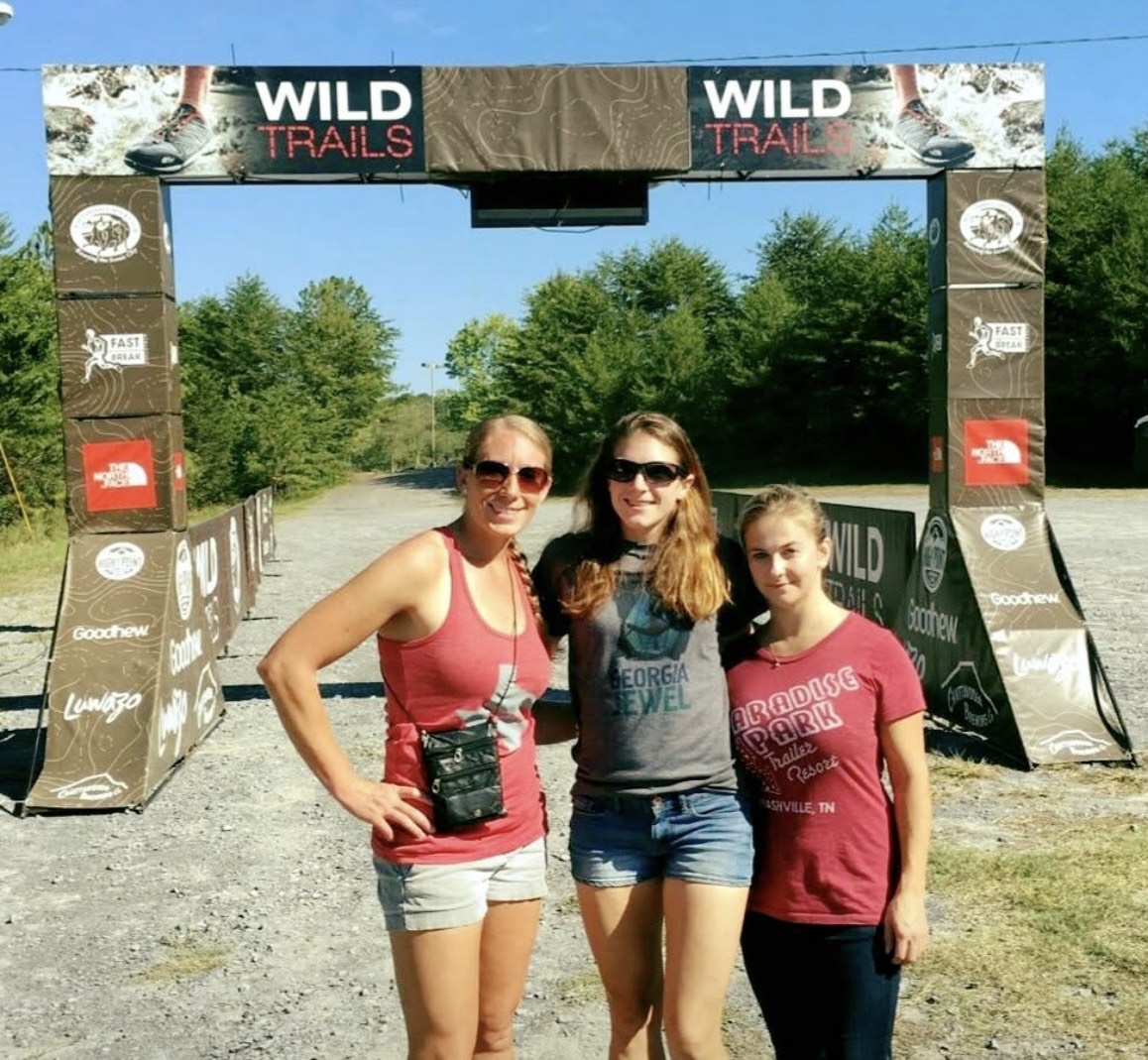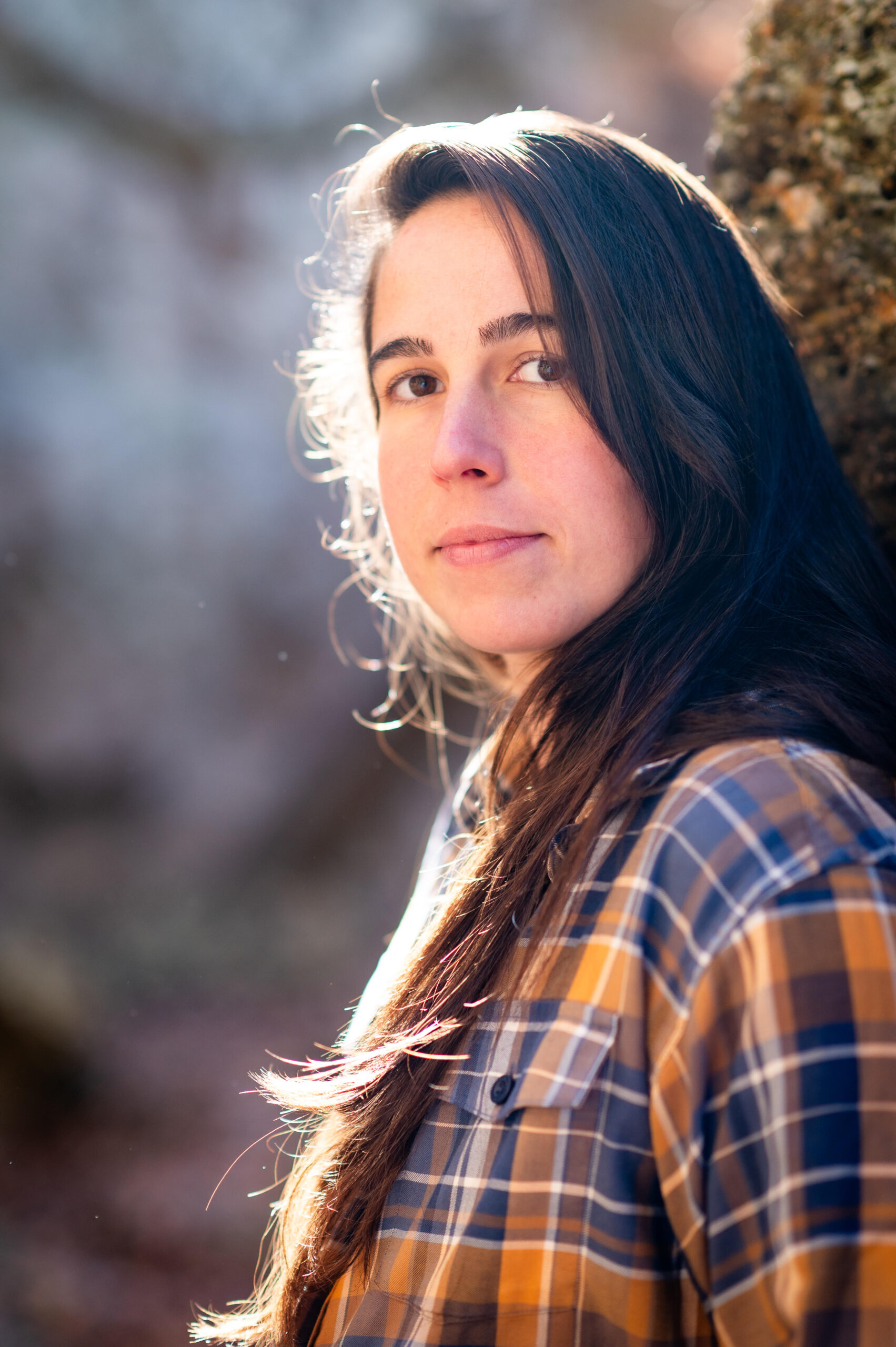Tough Race, Tougher Decision | DNF Stories – Meg Landymore

The Mission:
Back in 2016, Meg decided she wanted to squeeze in a 100-mile race before trying to get pregnant with her second child. Her first son was eighteen months old, and her most recent 100-mile medal had just turned 3. She hadn’t been training specifically for a 100-miler, but had been running a lot and felt strong, so she registered for the extremely rugged Georgia Jewel 100, which had been on her radar, and was eight weeks away. She scrambled to assemble a bare bones crew: a running friend named Torey, and her childhood best friend, Jessica, who knew nothing of distance racing, aside from Meg’s love for it.
Though Meg was a strong racer, she wasn’t going into the Georgie Jewel with lofty expectations. She just wanted to finish the race—to know that she could still complete 100 miles after the arduous process of forming another human being and giving birth—to give her something to hold onto as she went through that all over again.
The Attempt:
After a solid 14 miles, Meg developed a calf cramp, which had her lying on the ground clutching her frozen leg. After a heavy electrolyte dose, and a little bit of time, she was able to continue. The day was heating up, and the humidity was intense. Welcome to Georgia.
Around the 50k mark, Meg noticed swelling and stiffness in her fingers, and realized she hadn’t peed in a few hours. At the aid station, she took a break to hydrate and strategize the next section, planning to take it easier on pace and try to linger in any shade that she could find.
The next 11 miles turned out to be a long stretch of totally exposed gravel road. The sun beat down, roasting Meg all the way to the 50-mile turnaround. When she arrived there, race volunteers informed her that she was hours ahead of the next competitor—she was in the lead.
They encouraged her to make only a quick pit-stop at the aid station so she didn’t lose any ground, but Meg knew she wasn’t in any condition to roll through without a proper break. She took 20-30 minutes eating, hydrating, and trying to recuperate so she could continue on and hopefully finish the race.
A young man approached her, offering to pace. He was wearing tiny running shorts, no shirt, and carried a handheld flask of water. She hadn’t planned to have a pacer so early in the race, but thought it might be helpful in the state she was in. So they left the aid station together around 2 pm at a steady walk.
ADVERTISEMENT
Over the next few miles, Meg observed her body. She started to pee clear again. Her muscles moved smoothly, if not as fast as they had at the beginning of the race. After a while, Meg realized she didn’t remember the last time she’d seen a course marker, but knew that her mind had been elsewhere. She asked the pacer if he’d seen one, and he said that he had.
As the sun crept lower in the sky, they stopped for a moment to take in a beautiful view. She thought to herself, “I didn’t see this on the way up.” But she’d been going the opposite direction then, and perhaps just not paying very close attention. She asked the pacer again if he was sure they were on route. He was confident they were, but she knew they should have reached the next aid station by now. And she knew that neither of them had a headlamp.
After a short debate, Meg decided to turn around and head back the way they’d come from, in hopes of finding her way back to the course. The pacer ran further out the way they were headed, before finally turning around and catching up with her on the road. As the way became darker, they held hands and slow-walked through the night, until they couldn’t see at all and found a place to sit and wait, hoping that someone would find them. They were both out of water, and out of other ideas.
A headlamp appeared in the distance. Meg’s friend, Torey, had come out onto the course looking for them, when they failed to reach the aid station in what seemed a very reasonable amount of time. A wave of relief washed over Meg when they were reunited. Torey walks with Meg to the next aid station, where they agree that Meg will continue in the race, with 12 extra miles added on due to the detour.
Torey and Meg leave the aid station to climb John’s Mountain, after she’d taken some time to rehydrate and fuel.
The Call:
During the long grinding climb before the 74-mile aid station, Meg and Torey debated whether to stay the course, or pull out of the race. So many things had gone wrong. Meg was unsure whether her body would make it to the end, and what the long term effects to her legs might be if she continued on. The damage done to her kidneys and other organs by multiple bouts of dehydration and heat exhaustion in a single day. She thought about Torey, who had come out to run with her, and Jessica who had agreed to spend the weekend in the woods to celebrate Meg’s birthday. This wasn’t the fun weekend she had meant for them to share. By the time they reached the aid station, they had agreed that it was for the best for Meg to call it quits.
When they reached the aid station, a race volunteer asked Meg, “are you sure you want to drop?” Though Meg and Torey had agreed that she would drop, and her legs were barely functioning, Meg’s heart whispered, “keep going”. Meg looked at Torey, who had immediately stripped off her running vest and dropped into the nearest chair. Meg thought about the emotional toll the last few hours must have taken on Torey, agonizing over whether to stop or go. A part of her knew that she could keep going. She had read so many gritty stories about runners finishing races on broken bones, or with full body meltdowns. She knew it was possible. But maybe she just wasn’t that kind of racer. Meg told the volunteer that she was done. In that moment the weight of regret settled in her stomach. By the next day, as she watched the first finishers cross the finish line, she knew she’d made the right decision.
- Pay Attention: Take responsibility for your own race. Don’t rely on anyone else to keep you on track. This includes knowing the course details before the race AND paying attention to course markings along the way.
- Nutrition/Hydration: A lifelong journey for runners. Work to understand how your body reacts to different conditions, like heat and humidity. (Just another form of paying attention.)
- Training/Preparation: Train for the course you are running. This includes strength training, practicing hills/elevation, and heat training. Any of these factors can be the first domino to fall—and the others will soon follow, if you haven’t practiced for the conditions you will be facing.
Advertisement

Christine Reed is a New Mexico-based trailrunner and thruhiker whose passion for movement and the outdoors were born after reading blogs about the Appalachian Trail. She believes that everyone's story can be an inspiration. She is the award-winning author of Alone in Wonderland and editor of Blood Sweat Tears. When she's not running or writing and reading about running, she can be found relaxing in the hot springs and trying to even out her sock tanline.










